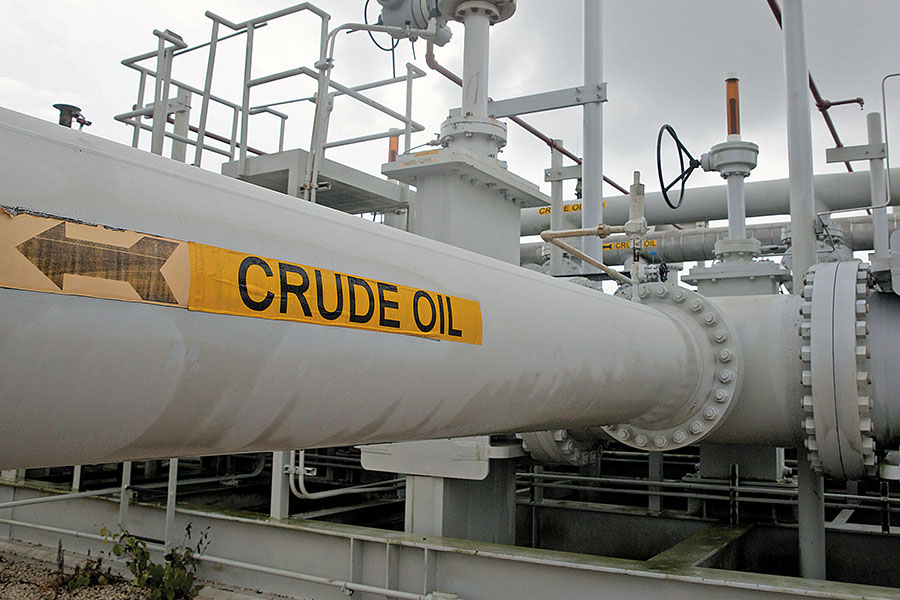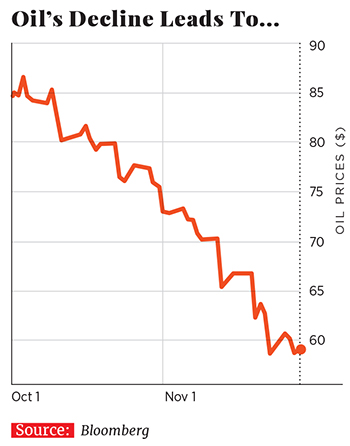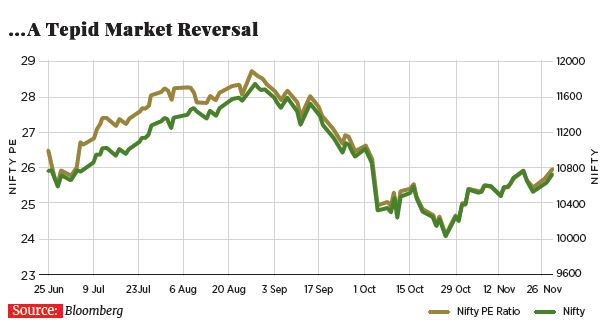
Oil's still not well
Crude prices are down by roughly a fourth since early October but the Nifty will fully reflect those gains only in the medium term
 Image: Richard Carson / Reuters
Image: Richard Carson / Reuters
Those hoping that a sharp fall in oil prices would result in a swift and sharp pullback in India’s equity markets have been disappointed. For now, with the Nifty having made up only half its fall, the market is adopting a wait-and-watch attitude. In doing so, it also paints a nuanced link between oil prices and the Indian indices.

Nilesh Shah, managing director of Kotak Mahindra Asset Management, points to four oil price scenarios and their differing impact on the market. First, when oil prices are moving up due to global growth accelerating, there is usually no impact on the market. For example, the period leading up to the 2008 global financial crisis.
Second, if oil prices pick up due to a supply shock, the markets usually decline. Third, oil prices going up when valuations are low. No impact. Fourth, oil prices rising when valuations are high. Result: A swift correction.
It was the fourth scenario that India fit into (see charts). When oil prices started rising in mid-September, the Nifty traded at a price earnings ratio of 28. This was also the level it peaked at in January 2008 before the onset of the financial crisis later that year. Not surprisingly, it corrected 14 percent over the next 45 days as the market began to price in oil at $100 a barrel.
The recent fall to below $60 a barrel on account of the postponement of the Iran sanctions as well as Saudi Arabia pumping more has caught the market by surprise. “One reason why there has been a slow rerating of the markets has been because it remains to be seen if the fall will sustain,” says Shah.

(This story appears in the 21 December, 2018 issue of Forbes India. To visit our Archives, click here.)
Post Your Comment















